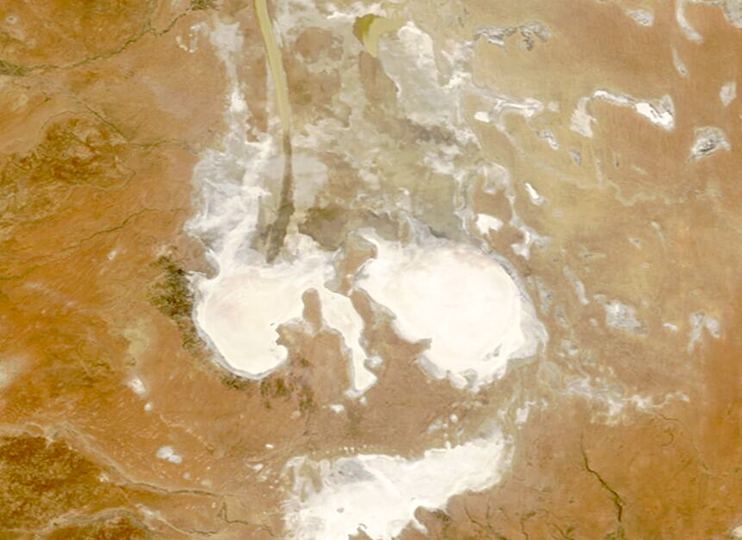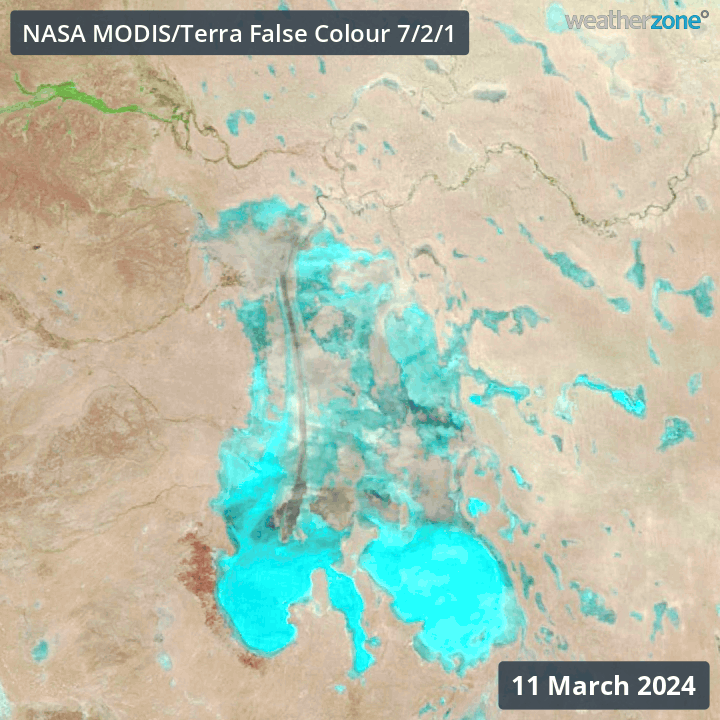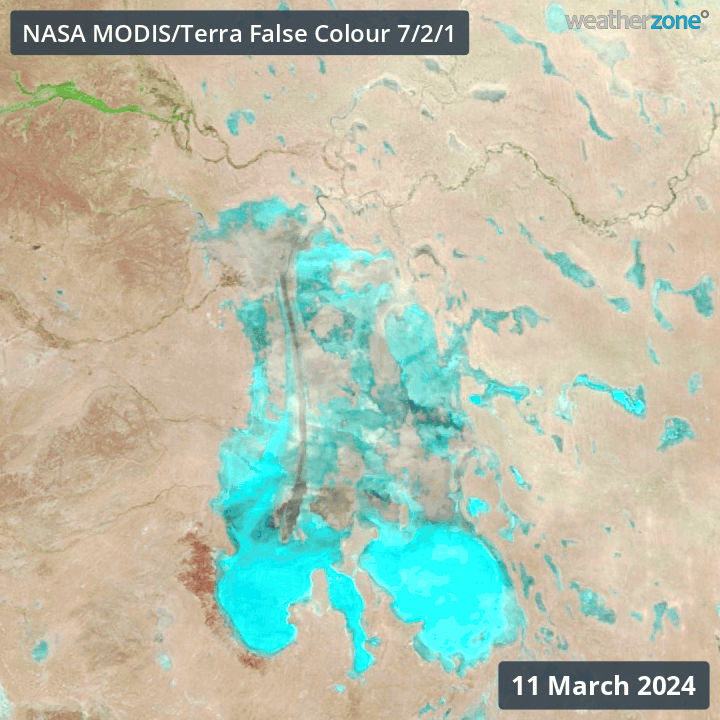
Image: A true colour satellite image of recent flow down the Warburton River towards Lake Eyre.
Kathi-Thanda Lake Eyre, the iconic salt basin which is Australia’s lowest point at around 15 metres below sea level, is beginning to fill.
The lake only tends to fill completely a couple of times each century, and when that happens, it takes about two years on average to dry up. But every few years, it partially fills. For that to happen, you need heavy rain in Queensland, and that’s exactly what happened in February, courtesy of the remnants of ex-Tropical Cyclone Kirrily.
Kirrily made landfall near Townsville way back on Thursday, January 25.
Weatherzone were still writing about it as late as February 5 as it continued to deliver moisture to a vast area of Queensland, Victoria, and New South Wales.
Some of the heaviest rain was in western and southwestern Queensland, and that’s exactly what’s needed for Kathi-Thanda Lake Eyre to start filling, as most of the ephemeral* creeks and rivers in that part of the country all feed down into the Lake Eyre basin.
(An ephemeral stream is one that only flows after periods of rain, as opposed to all the time.)
As you get closer to Kathi-Thanda Lake Eyre across the SA border, the main river is the Warburton and you can see water surging down it in the loop above.
If you’re interested in monitoring the situation out at Lake Eyre, one of the best sites is the Lake Eyre Yacht Club page.
The Lake Eyre Yacht Club is a real thing. They get out there and sail whenever they can and their excellent motto is “Ya gotta be jokin’ – No we’re not!” The club announced on March 17 that the Warburton River had reached the lake and would start to flow down the Warburton Groove – the channel that runs from north to south down the lake towards its lowest point.
At this stage, the current event does not appear to be significant enough to fill the lake entirely, however rain and storms are forecast for the weekend in some of the right areas such as Birdsville in southwest Qld, so the chances appear high that at least a portion of the lake will retain water for a while.
PUBLISHED ON: www.weatherzone.com.au




